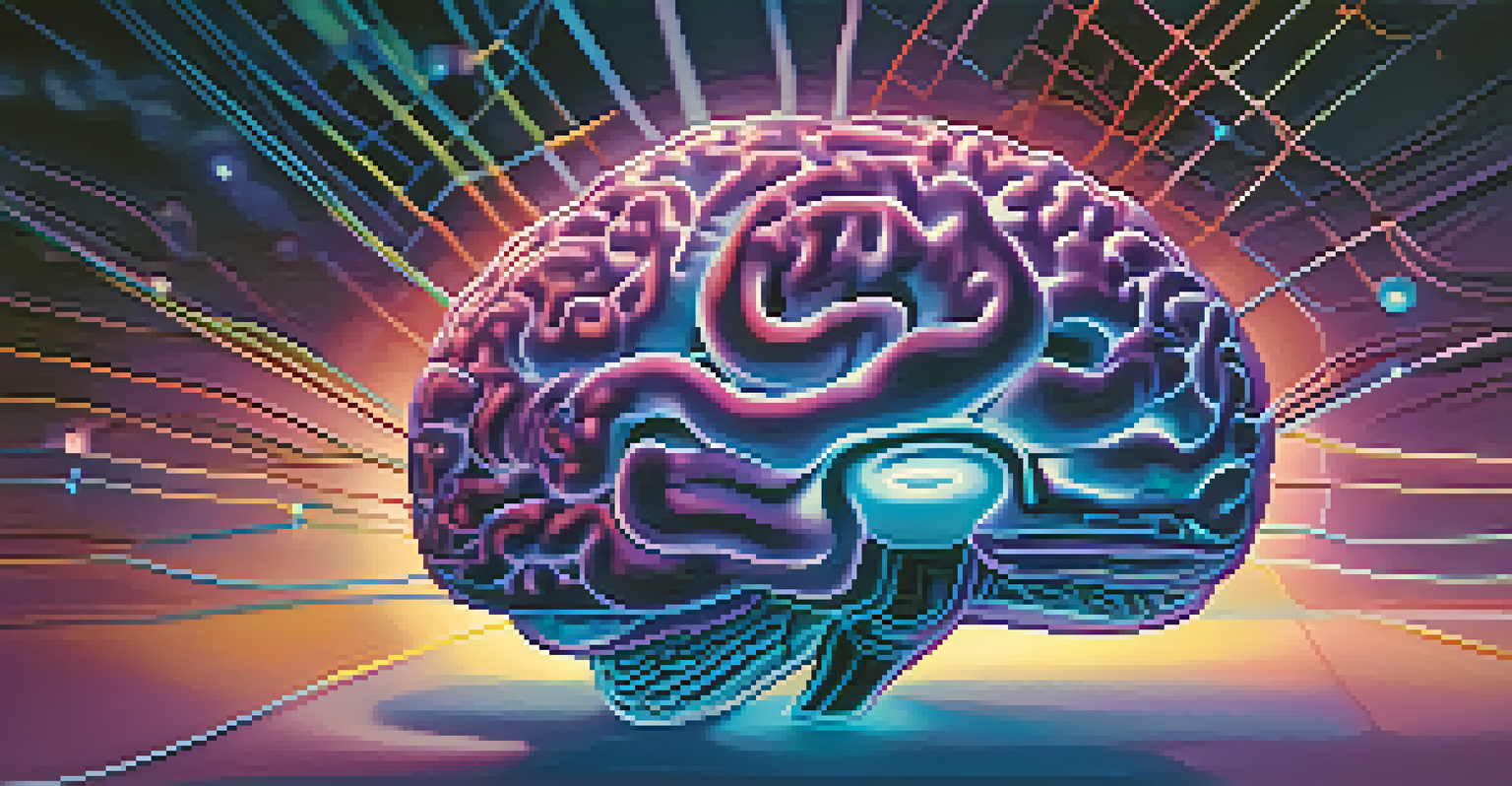The Science Behind Hallucinogens and Non-Dual Consciousness

What Are Hallucinogens and Their Effects?
Hallucinogens are substances that alter perception, mood, and cognitive processes. Common examples include psilocybin, LSD, and mescaline. These compounds can create vivid visual and auditory hallucinations, leading users to experience reality in a drastically different way.
The experience of unity is a core aspect of the hallucinogenic experience, which can open up new pathways to understanding ourselves and the universe.
The effects of hallucinogens can vary widely depending on factors such as dosage, environment, and individual mindset. Some users may feel profound connections to the world or experience a sense of euphoria, while others might encounter unsettling or challenging visions. Understanding these effects can help demystify the experiences associated with these substances.
Interestingly, the effects of hallucinogens have been utilized in therapeutic settings, showing promise for treating conditions like PTSD and depression. This opens up a conversation about the potential benefits of these substances when used responsibly and in controlled environments.
Understanding Non-Dual Consciousness
Non-dual consciousness refers to a state of awareness where the distinction between self and other dissolves. In this state, individuals may feel a profound sense of unity with the universe, transcending the boundaries of individual identity. It’s often described as a state of pure awareness, free from judgment and ego.

This concept is deeply rooted in various spiritual traditions, including Buddhism and Advaita Vedanta. Practitioners often seek non-dual experiences through meditation, but recent studies suggest that hallucinogens may also facilitate this state. The intersection of these two practices raises intriguing questions about the nature of consciousness.
Hallucinogens Alter Perception
Hallucinogens like psilocybin and LSD can dramatically change mood, cognition, and sensory perception, leading to unique experiences.
Experiencing non-dual consciousness can lead to transformative insights about existence and one’s place in the world. Many report lasting changes in their perception of life, relationships, and even their mental health after such experiences, which highlights the potential for personal growth.
The Brain on Hallucinogens: A Neurochemical Perspective
When hallucinogens are consumed, they primarily influence neurotransmitter systems in the brain, particularly serotonin. This interaction alters neural pathways, leading to changes in perception and consciousness. As serotonin levels fluctuate, users may experience a shift in mood and sensory perception.
Psychedelics are not a panacea, but they are a powerful tool for understanding the mind and transforming our experience of reality.
Studies using neuroimaging techniques reveal that hallucinogens can enhance connectivity between different brain regions. This increased communication may contribute to the feeling of unity experienced during non-dual states, as disparate thoughts and perceptions merge into a singular experience.
Understanding these neurochemical processes offers insights into why hallucinogens can evoke such profound experiences. It not only highlights the complexity of the human brain but also opens doors for further research into the therapeutic applications of these substances.
The Role of Set and Setting in Hallucinogenic Experiences
The terms 'set' and 'setting' are crucial when discussing hallucinogens. 'Set' refers to the individual's mindset—emotions, expectations, and psychological state—while 'setting' pertains to the physical and social environment during the experience. Both play a significant role in shaping the outcome of a hallucinogenic journey.
A positive, supportive environment can foster uplifting experiences, enhancing feelings of connection and non-duality. Conversely, a negative or chaotic setting may lead to anxiety or distress, potentially hindering any chance of achieving a non-dual state. This emphasizes the importance of preparation and intentionality.
Set and Setting Matter
The individual's mindset and environment significantly influence the outcome of hallucinogenic experiences, impacting emotional and psychological effects.
Many practitioners advocate for a mindful approach to using hallucinogens, encouraging users to create a safe, welcoming space. This attention to environment can significantly impact the potential for personal insight and transformation during the experience.
Cultural Perspectives on Hallucinogens and Non-Duality
Throughout history, various cultures have utilized hallucinogens in spiritual and healing practices. Indigenous tribes in the Amazon, for instance, have long used ayahuasca as a means to connect with the divine and explore consciousness. This cultural context provides valuable insights into the potential benefits and risks of these substances.
In many of these traditions, hallucinogens are seen not just as drugs but as gateways to spiritual awakening and non-dual awareness. Participants often report profound experiences of interconnectedness, shedding the burdens of individual identity and ego.
Exploring these cultural practices can enrich our understanding of hallucinogens, framing them as tools for exploration rather than mere recreational substances. This perspective invites a deeper conversation about respect, intention, and the significance of context in spiritual practices.
Therapeutic Applications of Hallucinogens
Recent research has highlighted the potential therapeutic applications of hallucinogens, particularly in mental health treatment. Studies have shown that substances like psilocybin can significantly reduce symptoms of depression and anxiety, often leading to profound shifts in consciousness and perspective.
Therapists may guide patients through these experiences, leveraging the non-dual states that arise to facilitate healing and personal growth. This could help individuals confront deep-seated issues and gain insights that are often difficult to access through traditional therapy.
Therapeutic Potential of Psychedelics
Research indicates that hallucinogens may offer substantial therapeutic benefits for mental health conditions, facilitating profound personal insights and growth.
As the stigma surrounding hallucinogens begins to dissipate, there is a growing interest in their use within clinical settings. This shift could pave the way for new treatment modalities that prioritize holistic approaches to mental health.
Navigating Risks and Ethical Considerations
While the potential benefits of hallucinogens are promising, it’s essential to navigate the associated risks and ethical considerations. Not everyone is a suitable candidate for hallucinogenic experiences, especially those with certain mental health conditions. Thus, responsible use is paramount.
Moreover, there are ethical implications regarding the commercialization and commodification of these substances. As interest grows, it's crucial to approach their use with respect for their cultural origins and the contexts in which they have traditionally been employed.

This awareness encourages a thoughtful dialogue about the responsible integration of hallucinogens into modern society. By recognizing both the potential and the pitfalls, we can foster an environment that prioritizes safety, education, and respect.